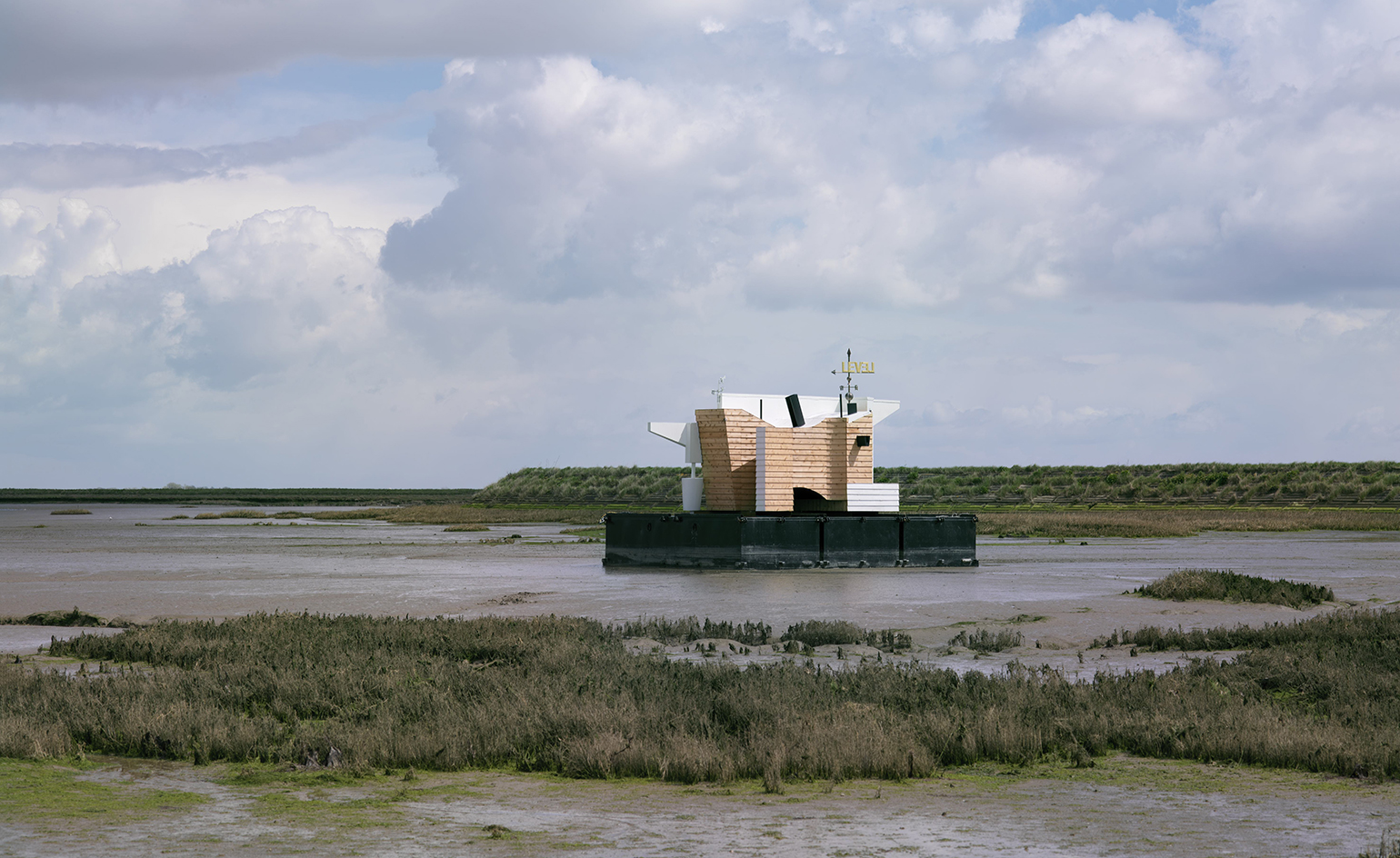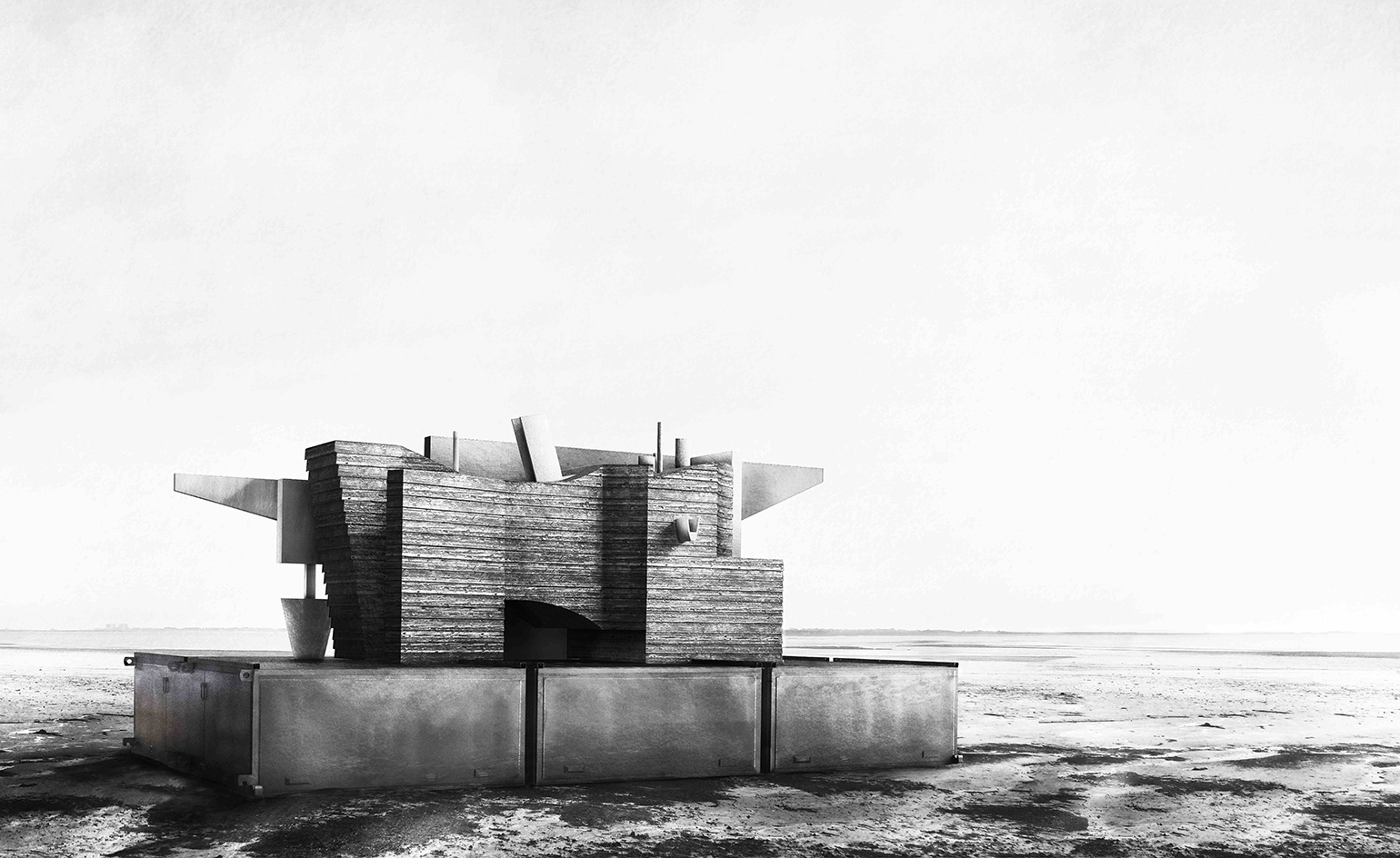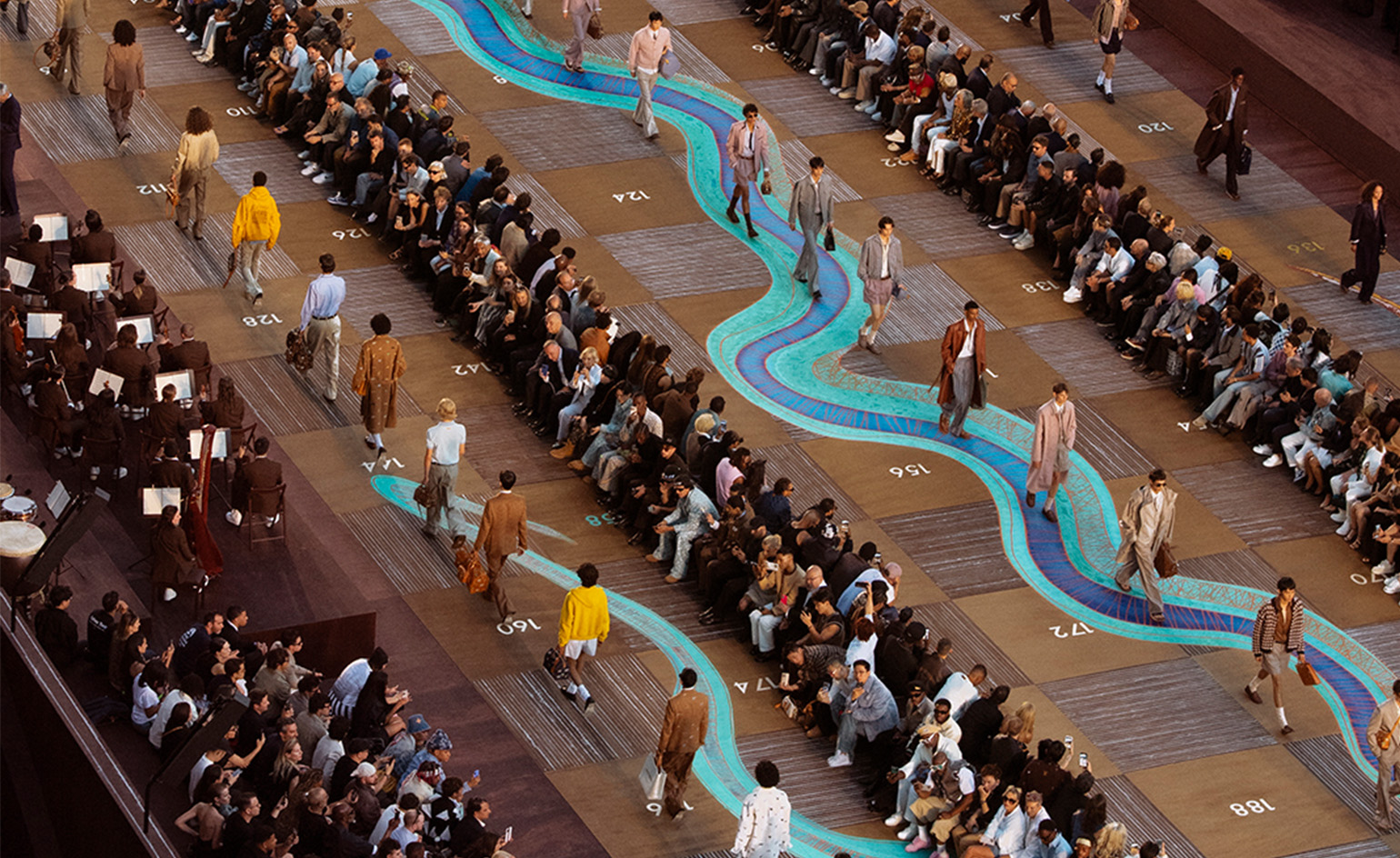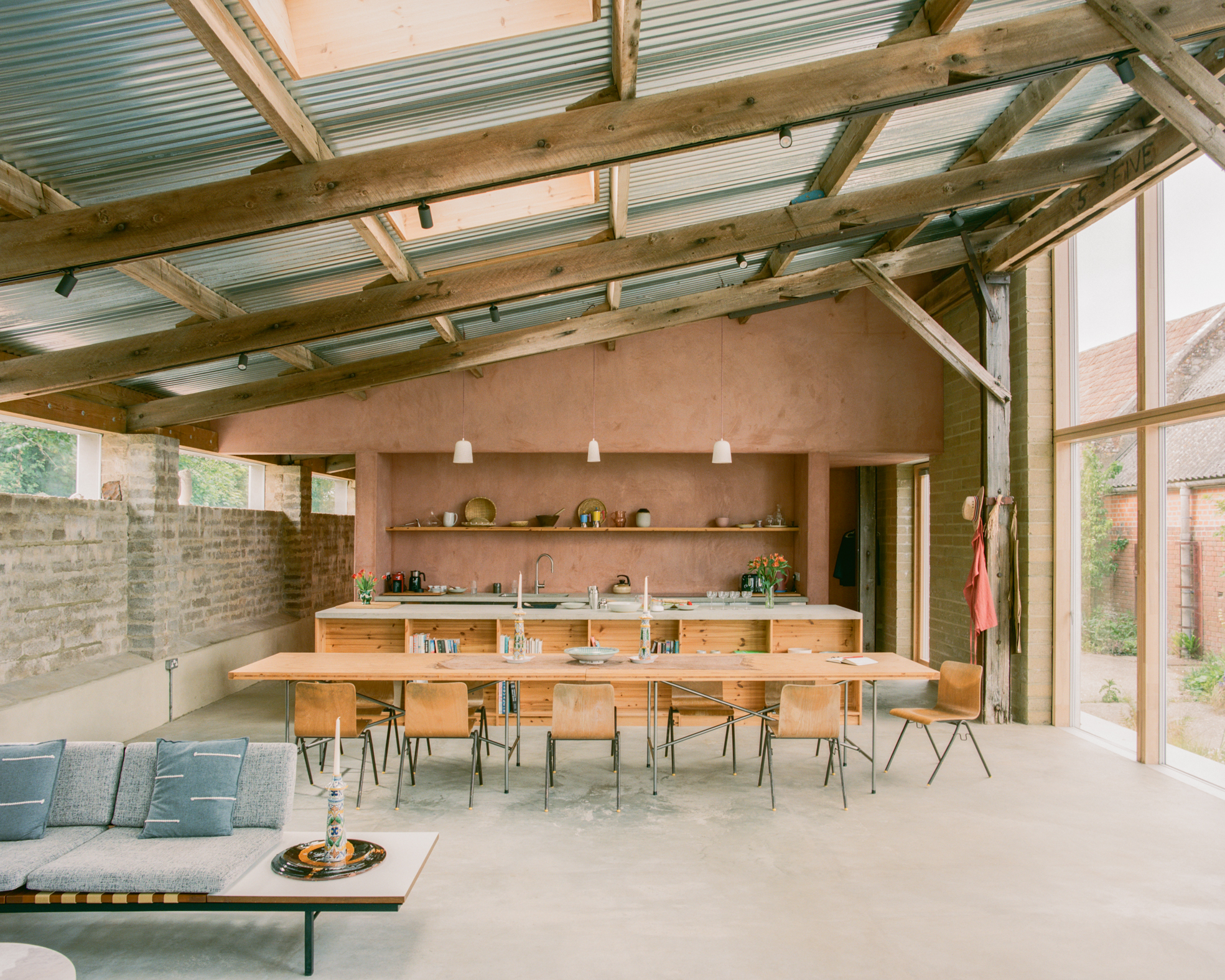Estuary explorer: a floating weather station commences its tour of the Thames

Rising sea levels, spiralling house prices and a shortage of development sites in the world’s major cities have prompted a spate of architectural proposals for floating residential concepts in recent years. As part of this ongoing dialogue, a new floating prototype conceived by architect and designer Matthew Butcher takes to the water this week, offering a more poetic perspective on the problem.
Scheduled to moor at a number of sites around the Thames Estuary, an area that is increasingly vulnerable to the risk of flooding, Butcher’s Flood House will be towed from site to site by a single tugboat over the next four weeks.
‘By presenting an architecture that is towed from one location to another and where occupation is effected by the rise and fall of the tides, the project seeks to question the way built structures relate to the environment,’ explains Butcher. ‘Architecture is usually considered to be a stable, fixed entity where internal temperature and conditions of comfort are heavily controlled. Flood House seeks to challenge these notions, suggesting instead a nomadic architecture that forms a responsive relationship to its surrounding environmental conditions.’
As well as serving as a poetic exploration, the project is also underpinned by a practical investigation into the surrounding environment. An onboard laboratory will record local weather conditions while also monitoring the condition of the structure’s plywood surface and how it reacts to its environment.
Measuring 5.5m by 7.5m, fabricated in ply and weatherboard and floating atop three steel pontoons, the structure takes its design cues from what Butcher refers to as the ‘Essex vernacular’ – fishing sheds and boats, World War II pillboxes and bunkers as well as the Maunsell naval sea forts.
A year in the making, the Flood House project was made possible by funding from UCL, where Butcher works as a tutor at the Bartlett School of Architecture, as well as the Focal Point Gallery in Southend-on-Sea, who worked with Butcher to develop a programme of commissions and events made in response to the project, in collaboration with curator Jes Fernie. An artwork by the artist Ruth Ewan is included.

The project will be moored at the Thames Estuary, at the Southend-on-Sea Pier.

Meant as a poetic exploration, the project also has an onboard laboratory to record local weather conditions and monitor changes to the plywood surface.
INFORMATION
Flood House launches at Southend-on-Sea on 30 April, as part of the Radical Essex project, where it will remain moored until 12 May. For more information on Matthew Butcher, visit the website
Receive our daily digest of inspiration, escapism and design stories from around the world direct to your inbox.
Ali Morris is a UK-based editor, writer and creative consultant specialising in design, interiors and architecture. In her 16 years as a design writer, Ali has travelled the world, crafting articles about creative projects, products, places and people for titles such as Dezeen, Wallpaper* and Kinfolk.
-
 We gaze into our crystal ball to predict the tech hits (and misses) of 2026
We gaze into our crystal ball to predict the tech hits (and misses) of 2026The shape of things to come: seven technologies that will define the year ahead, from robotics, AI, aviation and more
-
 This documentary tells the story behind Louis Vuitton’s monumental Snakes and Ladders runway set
This documentary tells the story behind Louis Vuitton’s monumental Snakes and Ladders runway setThe new film offers a rare behind-the-scenes glimpse at how Pharrell Williams and Studio Mumbai conceived the 2,700 sq ft Snakes and Ladders board, which backdropped the house’s S/S 2026 menswear collection last June
-
 This remarkable retreat at the foot of the Catskill Mountains was inspired by the silhouettes of oak leaves
This remarkable retreat at the foot of the Catskill Mountains was inspired by the silhouettes of oak leavesA New York City couple turned to Desai Chia Architecture to design them a thoughtful weekend home. What they didn't know is that they'd be starting a farm, too
-
 Wallpaper* Architect Of The Year 2026: Je Ahn of Studio Weave on a building that made him smile
Wallpaper* Architect Of The Year 2026: Je Ahn of Studio Weave on a building that made him smileWe ask our three Architects of the Year at the 2026 Wallpaper* Design Awards about a building that made them smile. Here, Je Ahn of Studio Weave discusses Can Lis in Mallorca
-
 You can soon step inside David Bowie’s childhood home
You can soon step inside David Bowie’s childhood homeWith a set completion date by 2027, the musician's childhood home in Bromley will be restored to its original 1960s appearance, including Bowie’s bedroom, the launchpad for his long career
-
 Wallpaper* Design Awards: this rammed-earth house in Wiltshire is an eco exemplar
Wallpaper* Design Awards: this rammed-earth house in Wiltshire is an eco exemplarTuckey Design Studio’s rammed-earth house in the UK's Wiltshire countryside stands out for its forward-thinking, sustainable building methods – which earned it a place in our trio of Best Use of Material winners at the 2026 Wallpaper* Design Awards
-
 Step inside this perfectly pitched stone cottage in the Scottish Highlands
Step inside this perfectly pitched stone cottage in the Scottish HighlandsA stone cottage transformed by award-winning Glasgow-based practice Loader Monteith reimagines an old dwelling near Inverness into a cosy contemporary home
-
 This curved brick home by Flawk blends quiet sophistication and playful details
This curved brick home by Flawk blends quiet sophistication and playful detailsDistilling developer Flawk’s belief that architecture can be joyful, precise and human, Runda brings a curving, sculptural form to a quiet corner of north London
-
 A compact Scottish home is a 'sunny place,' nestled into its thriving orchard setting
A compact Scottish home is a 'sunny place,' nestled into its thriving orchard settingGrianan (Gaelic for 'sunny place') is a single-storey Scottish home by Cameron Webster Architects set in rural Stirlingshire
-
 Porthmadog House mines the rich seam of Wales’ industrial past at the Dwyryd estuary
Porthmadog House mines the rich seam of Wales’ industrial past at the Dwyryd estuaryStröm Architects’ Porthmadog House, a slate and Corten steel seaside retreat in north Wales, reinterprets the area’s mining and ironworking heritage
-
 Arbour House is a north London home that lies low but punches high
Arbour House is a north London home that lies low but punches highArbour House by Andrei Saltykov is a low-lying Crouch End home with a striking roof structure that sets it apart